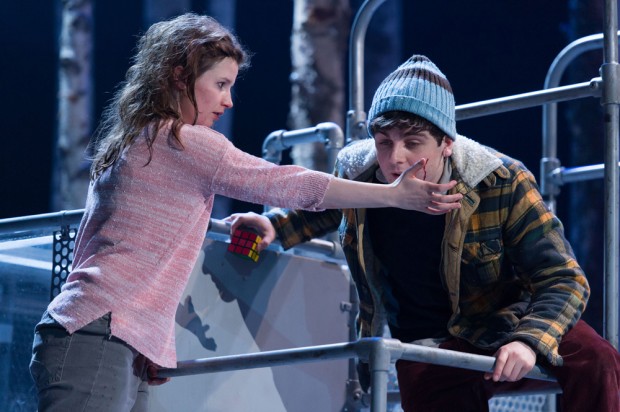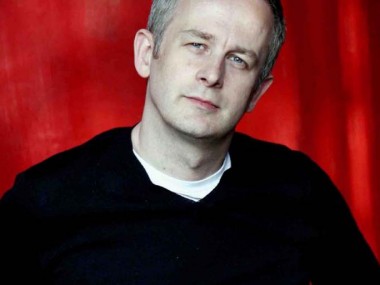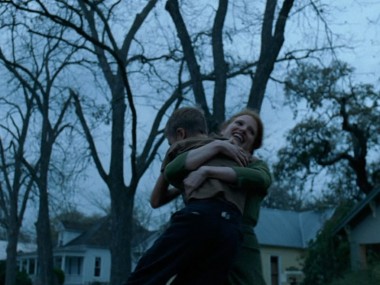Let the Right One In, Royal Court
Thursday 5th December 2013

Vampire romance is a genre which has a mysterious tendency. Every time it migrates from one art form (say novel) to another (say film) it loses some of its darkness and acquires a strange sweetness. So it has been with Let the Right One In, a 2004 novel by Swedish penman John Ajvide Lindqvist, which was made into a slightly less dark tale in its first Swedish film version (2008) and then into an even sweeter American film adaptation as Let Me In (2010). But if vampire romance lives by killing off its own dark soul, how will this stage incarnation fare?
Anyone who has seen either of the films will immediately recognise this perverse story of loneliness and friendship. Oskar, a bullied young teenage boy, hooks up with his next-door-neighbour, Eli, a child who is as old as the forest where they meet. As they awkwardly explore their friendship, we get to know them better. And we enter a mysterious but beguiling world of androgyne: is Eli female, male or something else? Is Hakan, the much older man she lives with, her father, her guardian or her lover? Or all three? Or none?
You get the picture. And it does darken. Oskar lives with his needy mother, who has a drink problem but sometimes just wants the milk of human kindness. And slips into bed with him. His father, who also has a drink problem, is absent; when, after some trouble at school, Oskar visits the old man, he sees him with a male companion. This a story where the happy chatter of suburban families is completely absent; this is a tale about other, looser connections between people.
Yet the emotional tug of the play is very strong. It is a world of random meetings, school-kid daydreams and angels, both guardian angels and avenging angels. It’s about elementally strong feelings of attraction and companionship, and about the physical pains and bodily nature of the undead: Eli, we are explicitly told, “smells like an infected bandage”. Like a pet, she needs feeding. But human blood is her only nourishment. The bonds she forms with humans thus have to be strong — it’s a matter of survival.
Figures of authority are absent, or ineffective. The kids are left pretty much on their own to cope with bullying, prejudice and their own hormonal storms. Parents are resented, or ignored. While the school teachers try to organise strength-training classes for the boys, who will look after their emotional needs? When the local policeman proves to be unable to solve a spate of terrible killings, who will protect society? Is there any cure for loneliness? In this world of sadness and isolation, it makes sense to invite the vampire in.
This stage version has a tough magic, which means that although it dashes through the story, its atmosphere is extremely seductive, and it pauses long enough to explore some of the darker moments of the novel. Adapted by playwright Jack Thorne, this is a National Theatre of Scotland production which is blessed with a vivid theatricality and a real feeling of stage excitement. As directed by John Tiffany and designed by Christine Jones, the pace is exactly right and fluid scene changes never hold up the action. Although I would have preferred some more exploration of the inner worlds of the main characters, the writing is impressively efficient and clear. My only gripe is one about timidity: why hasn’t the whole story been transposed to Scotland?
Best of all is the contribution that music and movement make to the experience of watching the show. Frantic Assembly’s Steven Hoggett adds balletic dance moves while Ólafur Arnalds’s music, familiar from the BBC’s Broadchurch, punctuates the action. Rebecca Benson’s Eli has a magnetic stage presence, with her unearthly voice, while Martin Quinn’s Oskar is touchingly vulnerable. Similarly, Ewan Stewart’s sinister Hakan contrasts with Susan Vidler’s Mum. Graeme Dalling as the bully Jonny leads the supporting actors. With its excellent special effects and direct emotional intensity, this is a dazzling and dramatic hit.
This review first appeared on The Arts Desk




